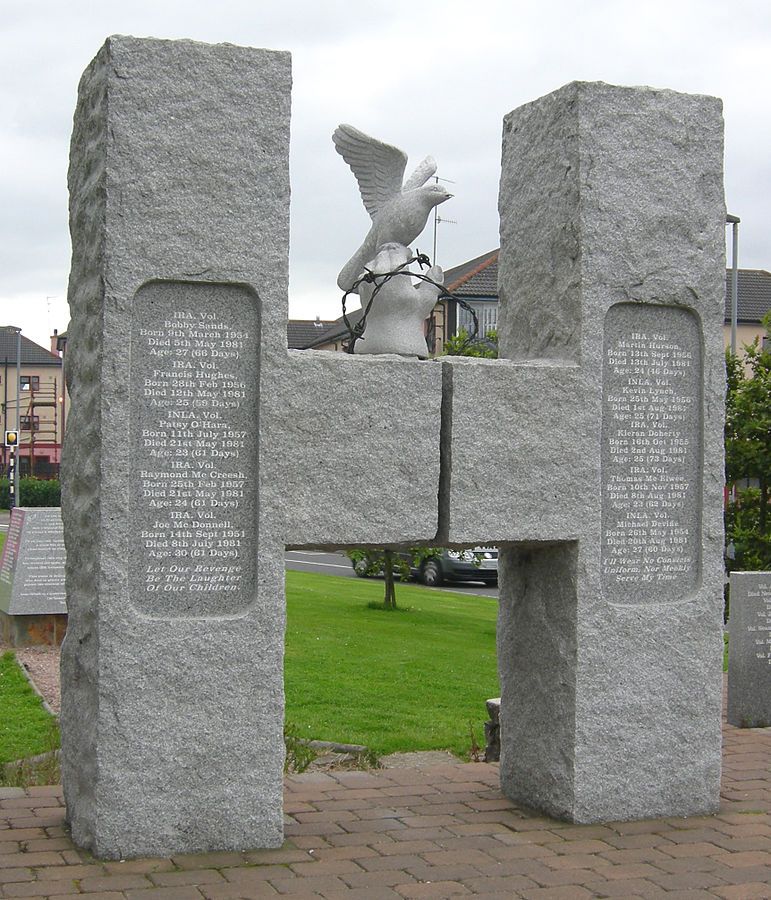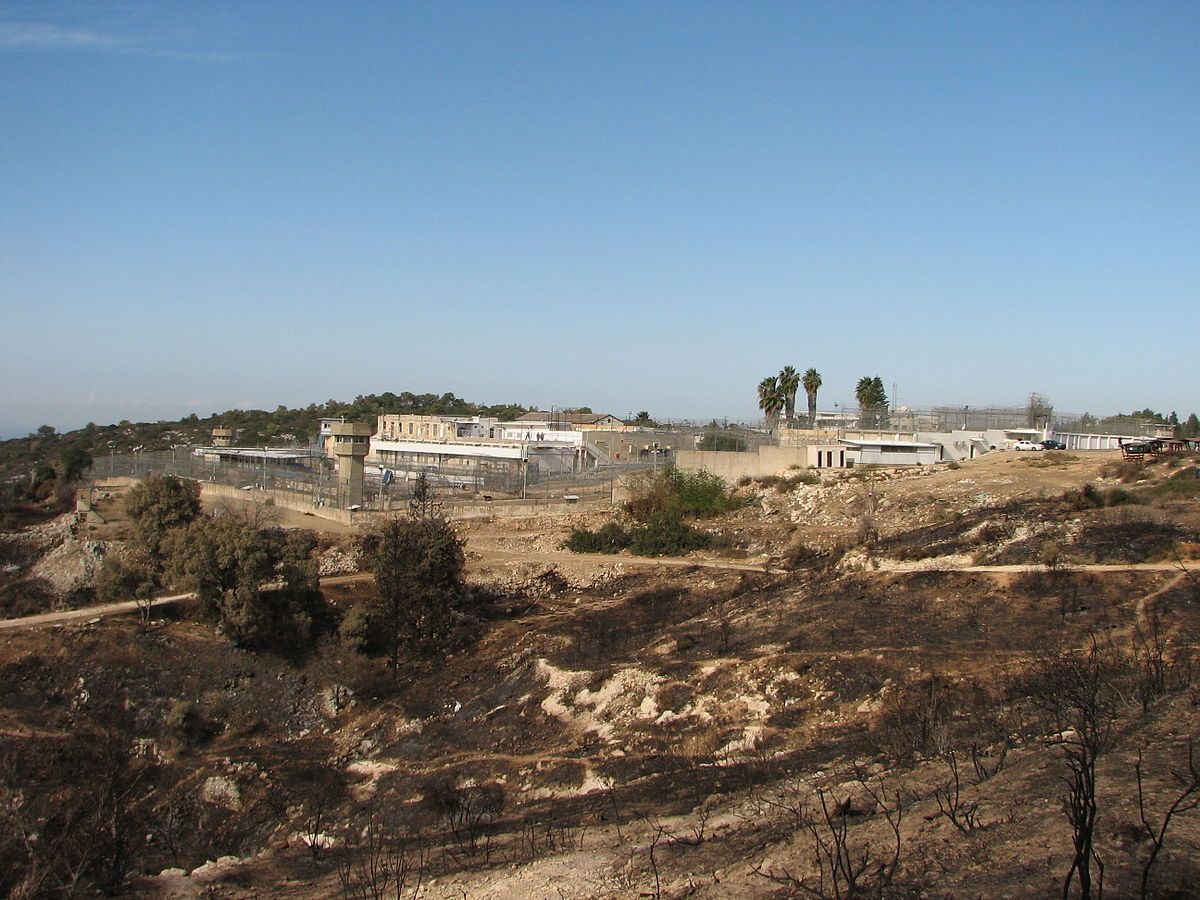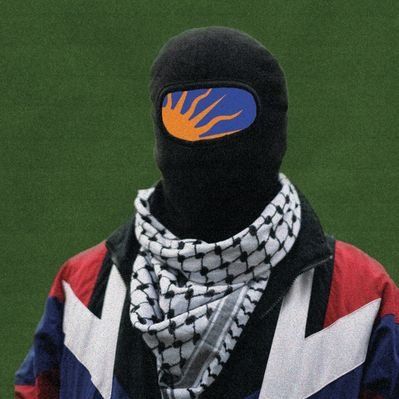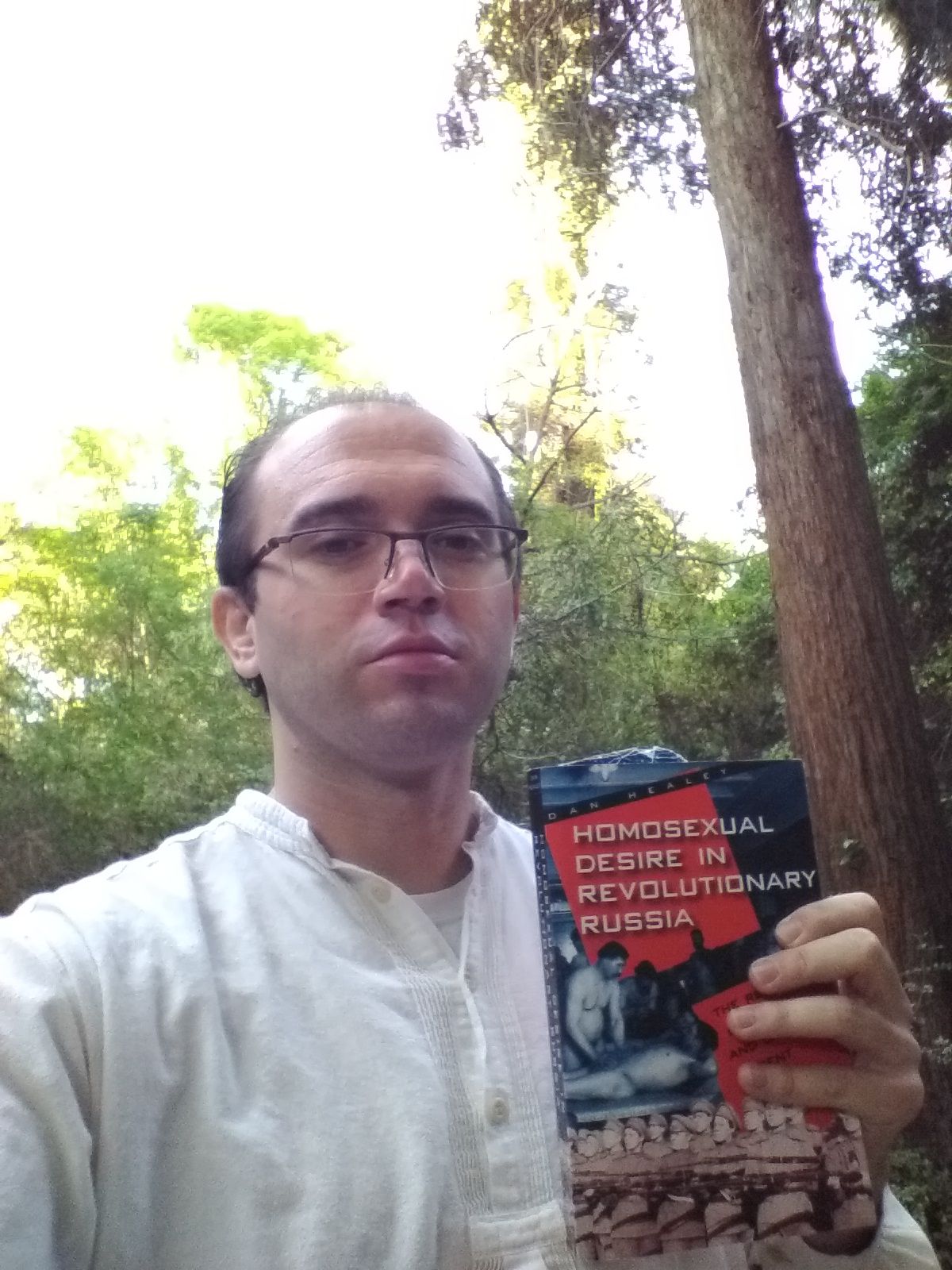This article was originally published in full by Negation Mag, and is being republished here (with edits) with their permission.
This article is split into two parts. Stay tuned for part two.
Note from the Author
This essay talks about Bobby Sands’ writings and the 1981 hunger strike by the H-Block prisoners in the Maze prison in the North of Ireland. In particular, it focuses on the concept of freedom as it arises as resistance to necropolitical control. However, it is important to note two things at the outset: firstly, that the situation within prisons in the North of Ireland and the UK has changed since the time Bobby Sands was writing — the number of “special category” or political prisoners is far fewer.
Secondly, I hold to the principles and aims of abolitionism, and when speaking of prison resistance, we must endeavour to write from this perspective. For these reasons, we must reject a false dichotomy between the righteous “political prisoner” and the depraved social or “criminal prisoner,” for the imprisonment of the criminal, of what some might call the lumpenproletariat, is simply imprisonment for a political purpose that has been reified, taken as a given within contemporary society.
The logic used to justify the imprisonment of criminalised people or peoples is that which was used to justify the internment of Catholics in Northern Island and to discredit the republican struggle. Furthermore, the Hunger Strikers themselves said they would welcome the five demands being granted to all prisoners. So instead we should look at the struggle of political prisoners, in order to see what they tell us about prison resistance in general.
All prisoners, from the perspective of carcerality's history, are political prisoners. We must reject any fragmentation and isolation of them from our movements. Let me be perfectly clear that while this essay takes revolutionary political prisoners as its focus, it can also refer to the millions incarcerated in colonial states such as the USA and the United Kingdom, and in prisons across the world. This preliminary note owes its inclusion to Lorenzo Kom’boa Ervin’s Anarchism and the Black Revolution.
‘It is not those who can inflict the most but those who can endure the most who will conquer.’ – Terence MacSwiney
Introduction
On 1 March 1981, Bobby Sands and 22 other inmates at Long Kesh Detention Centre started their hunger strike. This strike was started in order to win back from the British Government the special category status (that of a political prisoner) which had arisen in response to the heavy repression and colonial persecution of nationalist, Catholic communities. This repression included the creation of juryless Diplock courts as well as Operation Demetrius, where the unionist government of the time enacted the mass arrest, internment and imprisonment without trial of suspected Irish Republican Army (IRA) members from nationalist communities and backgrounds (though many of those interned were not in fact involved). The prisoners had refused to be subjected to such treatment without recognition of political status that the courts and internment implicitly acknowledged by circumventing the criminal courts. As the Bobby Sands Trust site says: ‘Between the years 1971 and 1975 thousands of additional prisoners, interned without trial, had a similar status in Armagh, Magilligan, Belfast Prison, the prison-ship Maidstone, and Long Kesh.’ In response to the legitimacy this status granted Irish republican prisoners, the British government decided to instigate a number of classical counterinsurgency measures. Primarily, the objective was to isolate those engaged in the resistance struggle from their support and to “normalise” life in the Six-County state.’ Any prisoner sentenced after a certain date (1 March 1975) would be classed as a criminal prisoner, not a political one. This led to increased protests and eventually two hunger strikes, the first in 1980 and the second in 1981.
The second hunger strike, which Sands was involved in, would go on for 216 days in staggered intervals before being called off on October 3. As the Irish Post recalls, ‘of the 23 men that embarked on this radical course of action, ten would die as a result,’ including Sands himself. The Hunger Strike was a great source of controversy and divided opinion at the time, and would go on to inspire songs, poems, murals, and several films, the most recent and notable of which being Steve McQueen’s ‘Hunger.’ During the first 17 days, Sands secretly wrote a diary on toilet paper and rice paper. This diary, which provides Sands' initial thoughts and commentary on his treatment by the Prison staff (or “screws”), is also a profound look into his views on Irish independence, socialism, and freedom as practised by the oppressed. For Sands, freedom was something necessary to human existence, irreducible regardless of how much violence was heaped upon by imperialist occupiers. Whilst the importance of freedom to Irish Socialism (and the importance of Socialism to Irish freedom) had been written about in detail, particularly by James Connolly and Jim Larkin, Sands’ articulation and development of Irish Socialism are especially important because of his proximity to the colonial British prison system. The colonial dynamic is crucial to a complete understanding of this republican freedom as compared to imperialist freedom, because as Sands himself noted:
‘I am a political prisoner. I am a political prisoner because I am a casualty of a perennial war that is being fought between the oppressed Irish people and an alien, oppressive, unwanted regime that refuses to withdraw from our land.’
Both Sands' writings and the hunger strike, which provided the culmination of his resistance to British occupation, remain an important reservoir of cultural and political resistance. These writings and strategies provide key lessons on what it means to resist, not only prison conditions for political prisoners, but also colonial and Eurocentric forms of humanity. Sands and the struggle of Irish republican political prisoners shared solidarity with other political prisoner/detainee campaigns around the world, such as that in Palestine, and they are part of a longer tradition resisting colonialism and coloniality. Sands' declaration that ‘it is then we’ll see the rising of the moon’ shares links with James Baldwin's assertion that ‘[t]here is reason, after all, that some people wish to colonize the moon, and others dance before it as an ancient friend.’[1] By drawing attention to the decolonial aspects of Sands’ writings and praxis, the links between these shared struggles can be nurtured and maintained.

The Hunger Strike and the Colonised
The struggle for the status of political prisoner, much of which had taken place in HM Prison Maze (better known as Long Kesh), had been going on since 1976, five years before Sands began hunger striking. The Bobby Sands Trust recalls that those from the IRA who had been categorised as criminals began their protest very soon after this change, and that ‘they refused to accept the new regime, refused to cooperate with the prison guards or to accept prison discipline. They refused to wear the prison uniform, were denied their own clothes, and wore only a blanket.’ In March 1978, this escalated to a dirty protest, which ‘arose essentially because the men were refused washing or toilet facilities or were beaten when they left their cell.’ After the dirty protest and several other events, which included a visit by a Cardinal who was appalled at the treatment and the state in which the prisoners had been left, a campaign was eventually started to gain the prisoners political status. The demands for this included:
- No prison uniform;
- No prison work;
- Free association;
- Full remission;
- Visits, parcels, and recreational/educational facilities.
Thus began the hunger strike. Whilst Sands himself never explicitly drew any links to the way in which the hunger strike may have had an effect on his thinking of freedom, I believe it is important to try to understand how he created his conception of freedom through engaging in such a practice in the environment of a colonial British prison. To understand this relationship between his thinking, his practice, and his environment, we need to examine the meaning of freedom for a colonial subject.
In the context of a prison, we must turn the strategy for liberation and resistance on its head. This understanding of freedom can be found in the anti-colonial text par excellence, Frantz Fanon’s The Wretched of the Earth. In the Manichean landscape of the colony, where ‘the colonial world is a world divided into compartments,’[2] the political situation reflects the imposition, by colonisers and settlers, of private property relations onto pre-existing nations and communities. Historically, this led to dividing up the geography of entire continents and destroying old ways of life the Indigenous peoples once had. Within these political coordinates, Fanon describes the immediate concerns of the native in resistance, the base of decolonisation: ‘for a colonized people the most essential value, because the most concrete, is first and foremost the land: the land which will bring them bread and, above all, dignity.’[3] This echoes a statement made by Walter Benjamin, who said that ‘the class struggle, which always remains in view for a historian schooled in Marx, is a struggle for the rough and material things, without which there is nothing fine and spiritual.’ For Benjamin, the higher purposes, beliefs, and causes around which movements might unify arise from these immediate demands. But in the prison system, against a foreign occupier, this has to be flipped or reversed.
For a prisoner, especially one fighting for political status, the connection to land is severed, and to accept any sustenance is to accept the conditions on which that sustenance is given and upon which their imprisonment itself is justified. Sands lists this as a primary motivation for the strike, stating ‘they will not criminalise us, rob us of our true identity, steal our individualism, depoliticise us, churn us out as systemised, institutionalised, decent law-abiding robots. Never will they label our liberation struggle as criminal.’ In the prison, criminal status itself has to be resisted, as to accept existence within this incarceration facility is to accept that those incarcerated, and by implication the entire republican movement, are criminals. This is corroborated by Sands’ diary, where he explains his motivation:
‘I am dying not just to attempt to end the barbarity of H-Block, or to gain the rightful recognition of a political prisoner, but primarily because what is lost in here is lost for the Republic and those wretched oppressed whom I am deeply proud to know as the “risen people.”’[4]
In contrast to Fanon’s Native, the political prisoner (whether they are granted the recognition of that status or not) must secure dignity before they can secure bread. The struggle must retain its legitimacy; however, this is not to suggest that the hunger strike was a purely symbolic action. As mentioned before, to accept the status of criminal means also to accept the abusive and aggressive treatment by the screws alongside the closely-regimented way of living that is part and parcel of most prisons. To be a prisoner means to exist within that prison's regime of control, and as Angela Davis makes clear in her work Are Prisons Obsolete?, in large scale prisons (such as the Penitentiary in the USA) ‘incarceration became the punishment itself.’ And as Michel Foucault explained in Discipline and Punish, the tightly knit order of the prison is torture ‘of a less immediately physical kind, a certain discretion in the art of inflicting pain.’[5] Foucault’s work on prisons, and what he would go on to call “biopolitics,” is especially important in contexts of colonial prisons and liberation wars. This is because Foucault’s work highlights the crucial role the prisoner's body plays in controlling prisoners and depriving them of rights and liberties. As he writes:
‘The body now serves as an instrument or intermediary: if one intervenes upon it to imprison it, or make it work, it is in order to deprive the individual of a liberty that is regarded as both a right and a property.’[6]
It is at the body that the colonial system of domination crystallises and can be most keenly felt. Whereas the Native for the most part in Fanon’s work experiences the oppression of the settler on a phenomenological level, which can only be relieved through violent decolonization – the reclamation of land leading to the overthrow and reversal of the economic system – the political prisoner instead encounters their own body as the very site of this violent struggle. However, as expressed in Youtuber JohntheDuncan’s overview of necropolitics, based in Achille Mbembe’s theory, he explains that in order for the power over life, for biopolitics, to have any meaning, the power over death cannot be discarded or left at the periphery. As Anish Chhibber explains, ‘Foucault’s concept of biopower describes the administration and regulation of human life at the level of the population and the individual body – it is a form of power that targets the population.’ What this means is that the ‘ancient right to take life or let live was replaced by a power to foster life or disallow it to the point of death.’

A key site of this control and the disciplining of the subject was the prison, the development of which represented for Foucault a change to a more discrete (but insidious) form of power. But in the colonial context, and in prisons generally, this characterisation of biopower as ‘disallowing to the point of death’ is not accurate. In a colonial context, death occurs not just through disallowing and discrete discourse but through active harm and violence done to the prisoners, through the creation of prisons as a space where death is significantly more likely to happen. Bobby Sands mentions in his short work One Day in My Life that the screws would repeatedly “forget” to feed prisoners and would beat and sexually harass them, and at several points he compares Long Kesh to a concentration camp. He writes, ‘Aren’t we dying anyway, I thought. Aren’t our bodies degenerating to a standstill? I am a living corpse now.’[7] There are clear limits to Foucault’s theory here, and this is where the philosopher and anti-colonial theorist Achille Mbembe comes in, with what Duncan calls a powerful corrective: the theory of necropolitics.
Necropolitics and Death Worlds
In short, what Mbembe means by necropolitics is that ‘the ultimate expression of sovereignty resides, to a large degree, in the power and the capacity to dictate who may live and who must die.’[8] He contrasts this concept with modern political theory, which typically ignores the various means of holding power that have arisen because of modernity and holds the deeply flawed position that ‘the ultimate expression of sovereignty is the production of general norms by a body (the demos) made up of free and equal men and women.’ That is to say, modern political theory implies that the West observes and enacts a reasonable and rational form of sovereignty in various representative democracies in its society through nonviolent means, which are distinct and separate from ‘violent’ means of creating sovereignty, such as war. As Lise Olivarius highlights, there is no actual separation between the two, because the power to kill constitutes the power to cultivate and control life:
‘Necropolitical death is a precondition for the biopolitical cultivation of life. Just think about the legitimizations of war with security arguments, or, more abstractly, about how maintaining the living standards of a dominant, Western class have fatal costs in other parts of the world and other layers of society. Some people must die so that others may live.’
Necropolitics has often taken, throughout history and on a domestic and global scale, the form of racial categorization, segregation, and control. Indeed, Mbembe says, ‘the function of racism is to regulate the distribution of death and to make possible the murderous functions of the state.’ One example of this form of control was chattel slavery, where on plantations, slaves were used to harvest and produce a variety of commodities and materials, while also being subject to regimes of control and punishment that could often be lethal (purposeful or otherwise).l Instead, as C.L.R. James recorded, extreme violence and overworking created a cycle whereby slave populations had a negative growth rate due to the rate at which they were killed, requiring the constant accumulation of Africans to supplement the Black plantation workforces. This created the position of a subject constantly at risk of death due the plantation’s power over them. Mbembe adds that the schemas of control present in the slave plantation would develop into the means by which imperialist colonies were controlled, and eventually returned to Europe in the form of fascism and the Nazis's deathcamps.[9]
In the colony, violence and the right to kill reach their most widespread form, because the ‘the colony represents the site where sovereignty consists fundamentally in the exercise of a power outside the law,’ not only in terms of the violence the colonial power enacts on indigenous populations, but also the extreme regimented control they are placed under. Olivarius sums it up by stating that alongside eruptions and instances of death, ‘necropolitics also operates through the control of populations by keeping them only barely alive in so-called death worlds [...] on the border between life and death as what Mbembe calls living dead.’ One characteristic of these death worlds, being sites of colonial occupation, is that they embody Fanon’s Manichean conception of the world:
‘For [Fanon], colonial occupation entails first and foremost a division of space into compartments. It involves the setting of boundaries and internal frontiers epitomized by barracks and police stations; it is regulated by the language of pure force, immediate presence, and frequent and direct action; and it is premised on the principle of reciprocal exclusivity. But more important, it is the very way in which necropower operates.’[10]
In particular, Mbembe looks to the occupation of Palestine, and the lives of those in Gaza and the West Bank, as examples of populations in death worlds. Gaza especially is often referred to as an “Open Air Prison.”[11] As a site that solidifies and establishes necropower, it makes it incredibly clear that ‘sovereignty means the capacity to define who matters and who does not, who is disposable and who is not.’ The prison is a site of necropolitical control because it is a division of space, an apparatus by which those in power can criminalise (that is to say, make disposable) those who exist and resist (the IRA, the Palestinians). This is borne out by the longstanding solidarity between Irish and Palestinian prisoners going back to Long Kesh and lasting till this day. Still Palestinian political prisoners are using hunger strikes to resist the oppressive administrative detentions imposed upon them by Israel, the most prominent example being Maher al-Akhras and the seven hunger strikers last year. Hunger strikes remain a potent means of resistance to colonial matrices of control.
These matrices of control are mentioned throughout Sands’ diary. In fact, he even calls them ‘torture.’ They came about as part of the criminalization of not only the hunger strikers but the entire Irish republican struggle. The criminalization of the prisoners would help to justify the killings of republicans by the British state, which in turn would cement the “total” control and sovereignty over the prisoners, further justifying their treatment. This strategy was simply a reform of the earlier, more open necropolitical violence (Sands’ mentions in his diary that those who criticise the republicans’ armed struggle forget that ‘the people who murdered those innocent Irishmen on Derry’s Bloody Sunday are still as ever among us’). The implementation of this strategy happened at many different levels of the British government in Northern Ireland, as the Bobby Sands’ Trust recalls:
‘This attempted “isolation and normalisation” policy took on a number of forms, all interlocked. There were various strategies adopted to create an illusion of political normalisation, the so-called “primacy of the police,” the gradual withdrawal of British army units and the Ulsterisation of British military forces were all tactically designed to isolate those engaged in struggle. This criminalisation attempt was part of the overall effort to project the resistance struggle as a criminal conspiracy and ran parallel with a propaganda thrust which saw the use of such terminology as “paramilitaries, Godfather, mafia” etc, etc, by British government spokespersons.’
The fragmentation of the world, and subsequent isolation of subjects from it, is integral to the spatial aspect of necropolitics. As Mbembe notes, ‘colonial occupation is not only akin to control, surveillance, and separation, it is also tantamount to seclusion. It is a splintering occupation, along the lines of the splintering urbanism characteristic of late modernity.’ For the Palestinians, that results in walled off zones with hard (literal) concrete borders, as well as different roads and checkpoints to take. Similarly, for the Irish hunger strikers and fellow republicans, there was not only isolation from society, but isolation from any social existence that could constitute dignity. Again, the Manichean character of colonial control manifests in a variety of methods and schematas, but in the example of prison environments, it is about the sectioning off of problematised, and elsewhere racialized subjects, to establish state sovereignty.

This criminalisation is common to the expansion of carceral methods of controls, and the expansion of prisons to deal with social contradictions. As Mariame Kaba states in her work We Do This ‘Til We Free Us, when US prisons began expanding in the 1970s, ‘a carceral logic, or punishment-mind set, crept into nearly every government function, including those seemingly removed from prisons.’ [12] As the State reforms and refines its use of carceral logics and technologies, we find it moves beyond individual sites of control such as prisons and expands to the rest of society, creating at the periphery the death worlds described by Mbembe, and closer to the core, more of a social prison (a la Tronti’s Social Factory[13]). Both rely on necropolitics as a base for their sovereignty, though working in different ways and at different levels of intensity. And both inevitably find their boundaries expanding in proportion to the colonial, imperial states' growing need for control and reinforcement of their sovereignty. This expansion comes as a result and reflection of the historical means by which this control was initially established: the accumulation of land, people, and resources for the purpose of enriching an imperialist state. As James Connolly said of the Russian Tsar’s imperialism:
‘His rule is founded on the sword, and can only be maintained by the sword, and whatever seriousness there is in his latest pronouncement may be translated into an appeal to his brother despots throughout Europe to cease warring with each other in order that their hands may be free to throttle the infant liberty in their own dominions.’
A system established by violence can only be maintained through said violence. By establishing itself through the violence of accumulation, that system comes to resemble and rely upon accumulation itself. Having accumulated land, this system accumulates space and time and power over the subject, and thus sovereignty over it. It accumulates control over almost every aspect of the prisoners' existence. Just as the expansion of carcerality reflects the cumulative process of imperialism’s development, the shift to carcerality from militarization reflects and repeats the same historical shift within the imperial core in the 19th century. As David Whitehouse outlines, the original way to deal with mass protests and strikes was to call the army in:
‘[...] English workers put together bigger and bigger demonstrations and strikes from about 1792 to 1820. The ruling class response was to send in the army. But there are really only two things the army could do, and they’re both bad. They could refuse to shoot, and the crowd would get away with whatever it came to do. Or they could shoot into the crowd and produce working-class martyrs.’
After this happened at the Peterloo massacre on 16 August 1819, where ‘soldiers were sent charging into a crowd of 80,000, injuring hundreds of people and killing 11,’ changes and reforms were made — 13 years later, the London City Police were formed. Whitehouse explains that this was not a better or peaceful way of enforcing the law, but a response to crowd mobilisation that resulted in a more “acceptable” way of subduing them by placing their actions within the logic of criminal action and carceral punishment. Whitehouse goes on to summarise that:
‘The new police force was designed specifically to inflict nonlethal violence upon crowds to break them up while deliberately trying to avoid creating martyrs. Now, any force that’s organized to deliver violence on a routine basis is going to kill some people. But for every police murder, there are hundreds or thousands of acts of police violence that are nonlethal — calculated and calibrated to produce intimidation while avoiding an angry collective response.’
We see this same situation reproduced in Northern Ireland during the Troubles (late 1960s to 1998). It presents us with some understanding that the move to nonlethal forms of control does not spell the end of necropolitics but rather exists to try and make it more acceptable, as these nonlethal means are still often constituted through the deaths of colonised and racialized subjects. But it also presents us with an understanding of how this form of control can be resisted. For if the power within a colonial prison and state gains its sovereignty from accumulation – whether that be land, wealth, death, life – then it implies that the State's control finds its basis in the ongoing reproduction of those conditions. A better understanding can be gained by Patrick Wolfe’s description of how race was developed and structured in his work Traces of History: Elementary Structures of Race (analysed here by Alana Lentin):
‘Race, it cannot be stressed strongly enough, is a process, not an ontology, its varying modalities so many dialectical symptoms of the ever-shifting hegemonic balance between those with a will to colonize and those with a will to be free, severally racialised in relation to each other. Race registers the state of colonial hostilities. The common factor is whiteness.’
It is important to note here that whilst Irish people have not been racialized for some time, Wolfe’s description of race is relevant — the means and strategies by which the Irish Hunger Strikers were tortured and repressed were developed in the periphery colonies, used first on racialized subjects such as the various Indigenous peoples in Australia, Turtle Island, & Abya Yala. Historically, Irish people were often portrayed as apes and less than human, or were categorised as on the same level as other colonised people. This changed for the most part as the British Empire's priorities shifted with Irish independence, but in the North of Ireland the remnants of these narratives provided the ideological charge for Unionism and the British state apparatuses throughout the six counties. These representations shared similarities and likely drew on the dehumanisation of Black people, who all over the world were and continue to be racialized subjects submitted to appalling oppression, and in some cases outright slavery, by prison systems.
This is the first part of a two part series. The second part, which is coming soon, will address the ways in which necropolitics has been and can be resisted, both physically and culturally. Furthermore, it will connect the praxis and resistance of Ireland with that of the Zapatistas and Palestinians, with a recognition of their shared struggle and solidarity.
References
[1] James Baldwin, No Name in the Street (New York, Vintage)[2] Frantz Fanon, The Wretched of the Earth, trans. Constance Farrington, (New York: Grove Press) 37.
[3] Ibid, 44.
[4] Bobby Sands, Prison Diary, emphasis mine, https://www.bobbysandstrust.com/writings/prison-diary/.
[5] Michael Foucault, Discipline and Punish: The Birth of the Prison (London: Penguin, 1977), 8.
[6] Ibid, 11.
[7] Bobby Sands, Writings from Prison, (Cork: Mercier Press, 1998), 43.
[8] Mbembé, J.-A., and Libby Meintjes. "Necropolitics." Public Culture 15, no. 1 (2003): 11-40. muse.jhu.edu/article/39984.
[9] Ibid., 21-23.
[10] Ibid, 26.
[11] Sunday Tribune, January 5, 2003.
[12] Mariame Kaba, We Do This 'Til We Free Us: Abolitionist Organizing and Transforming Justice (New York: Haymarket Press, 2021), 77.
[13] Introduced in the essay “Factory and Society” in Workers and Capital (London: Verso, 2019), Tronti describes the Social Factory as the point where “the whole of society becomes an articulation of production, the whole society lives in the function of the factory and the factory extends its exclusive dominion over the whole society.”


